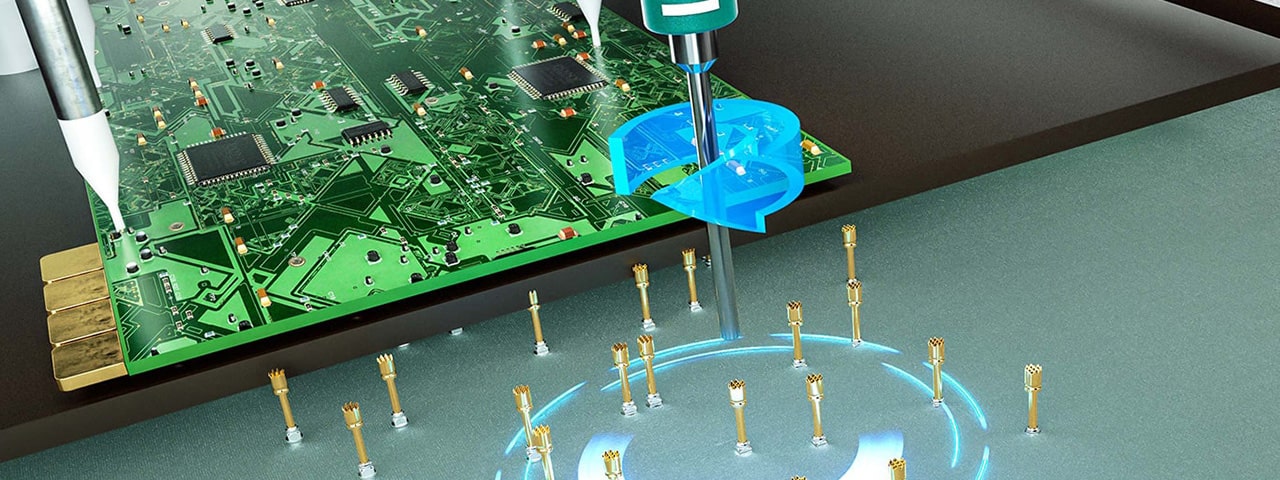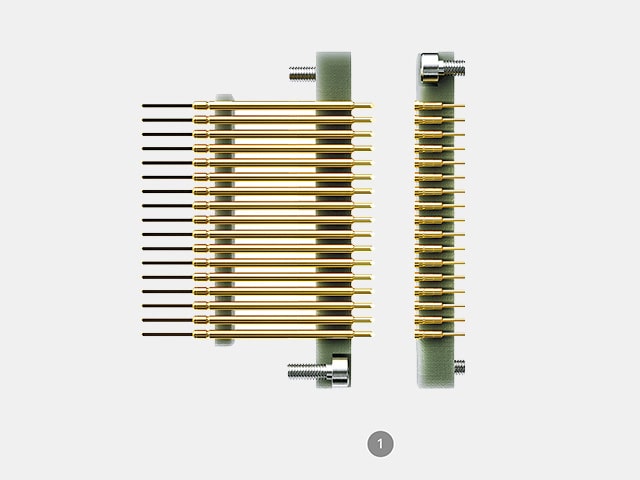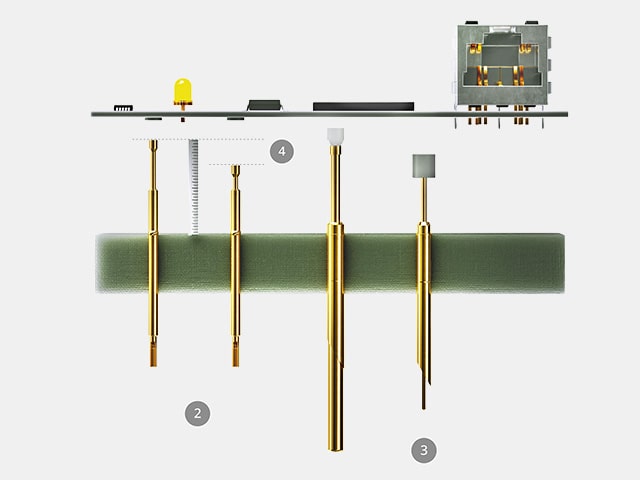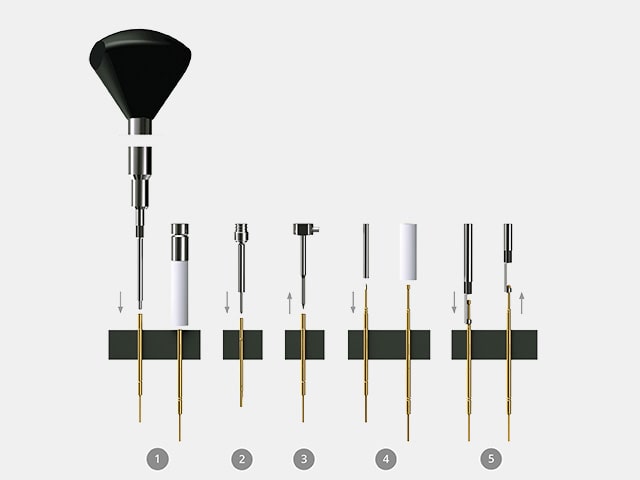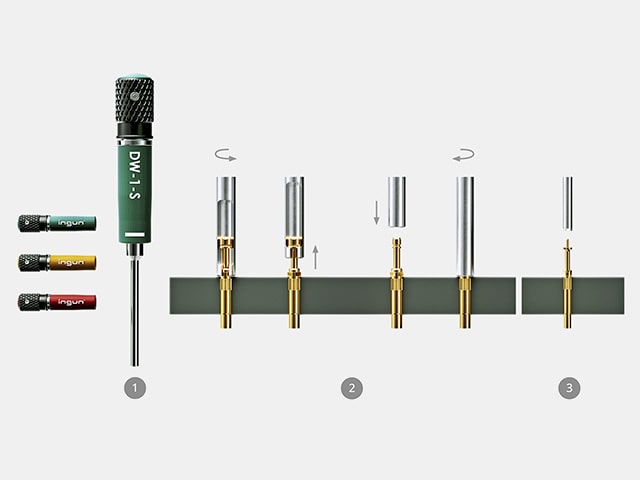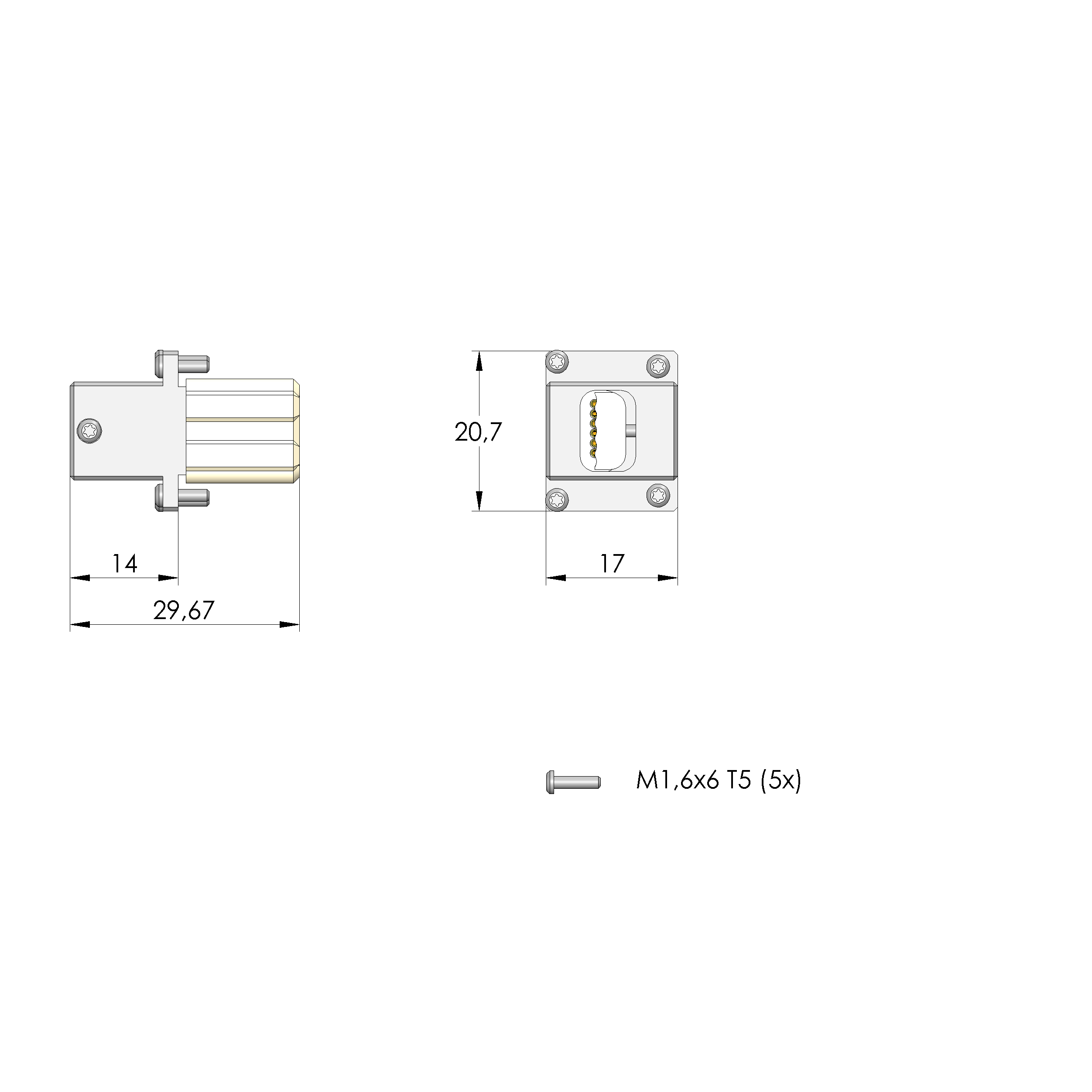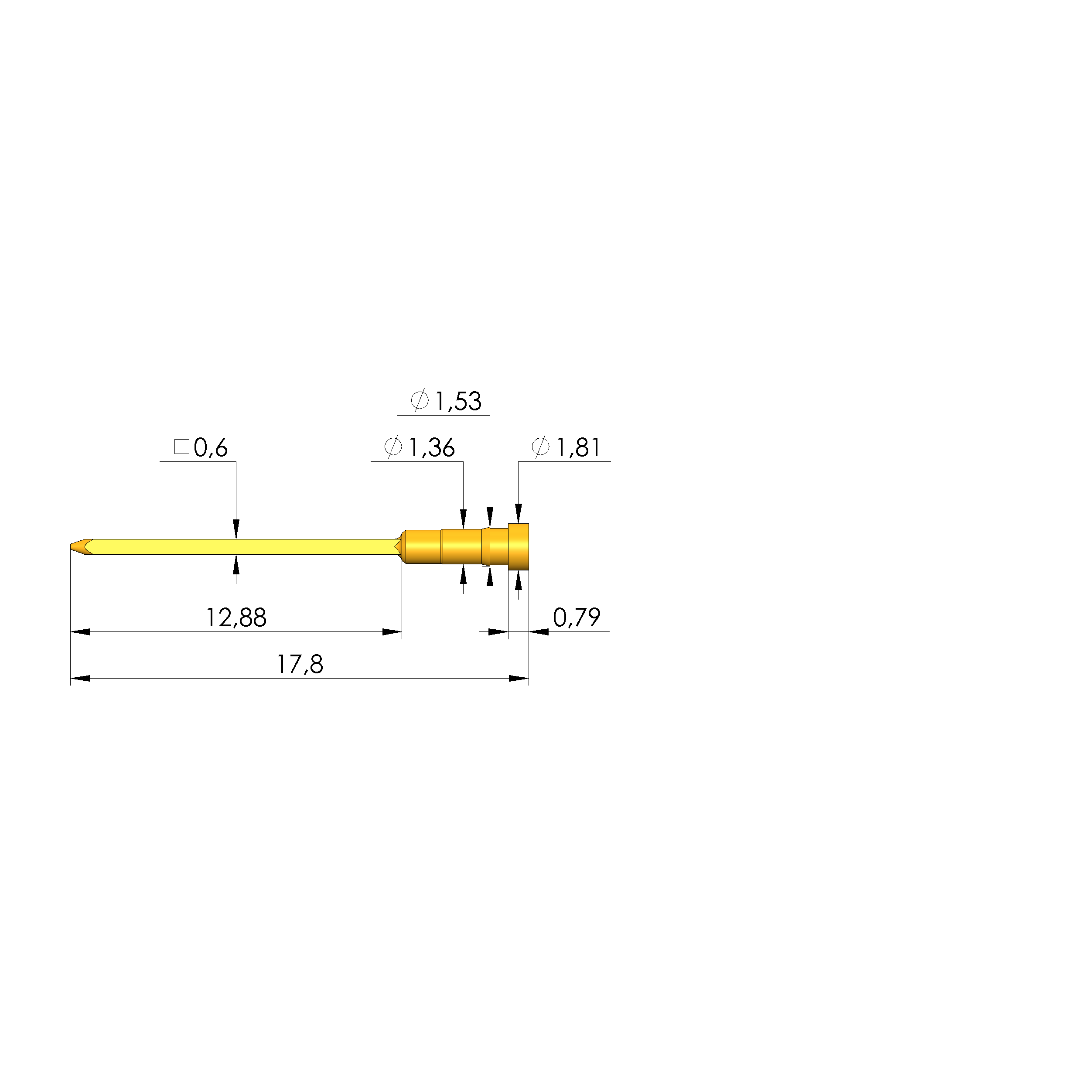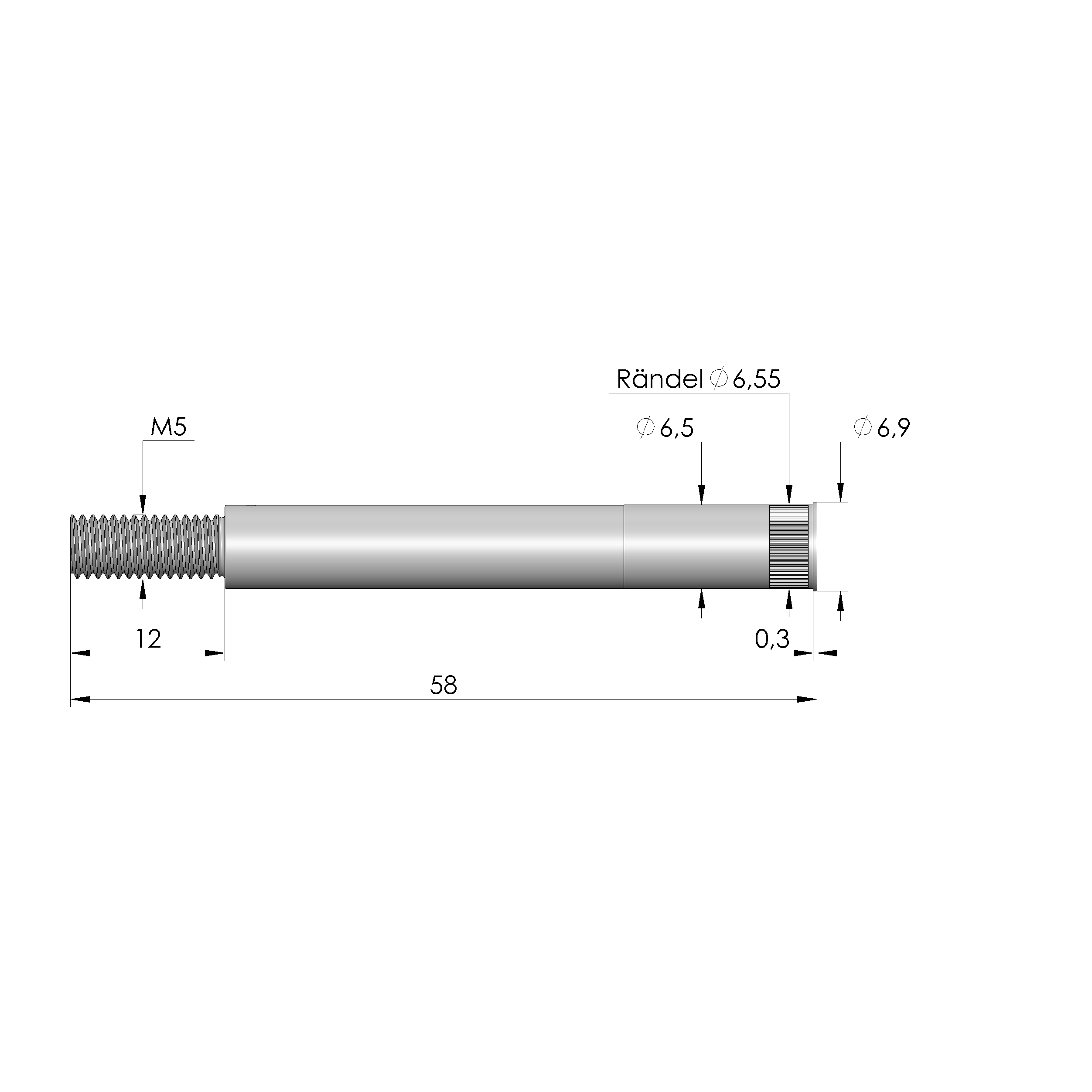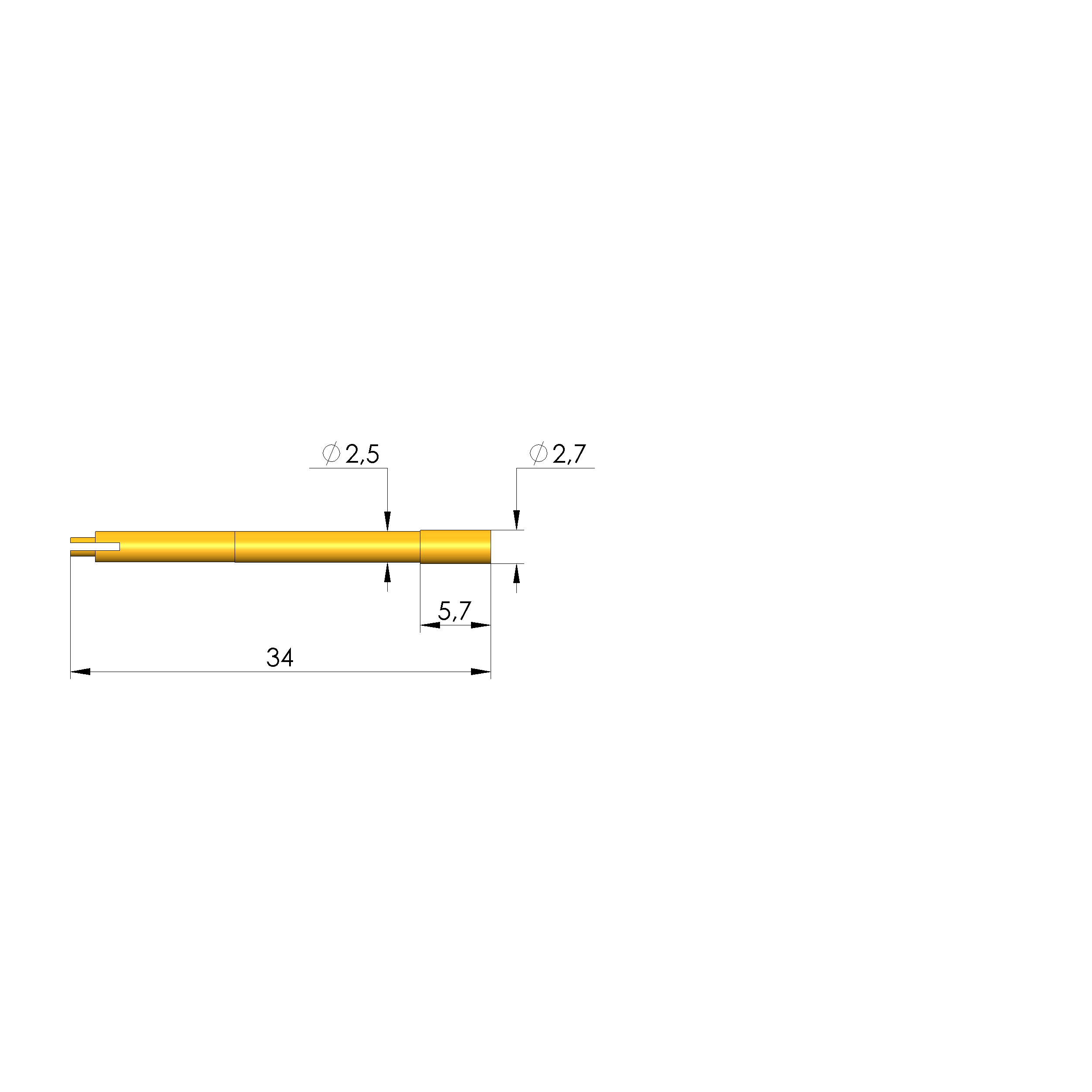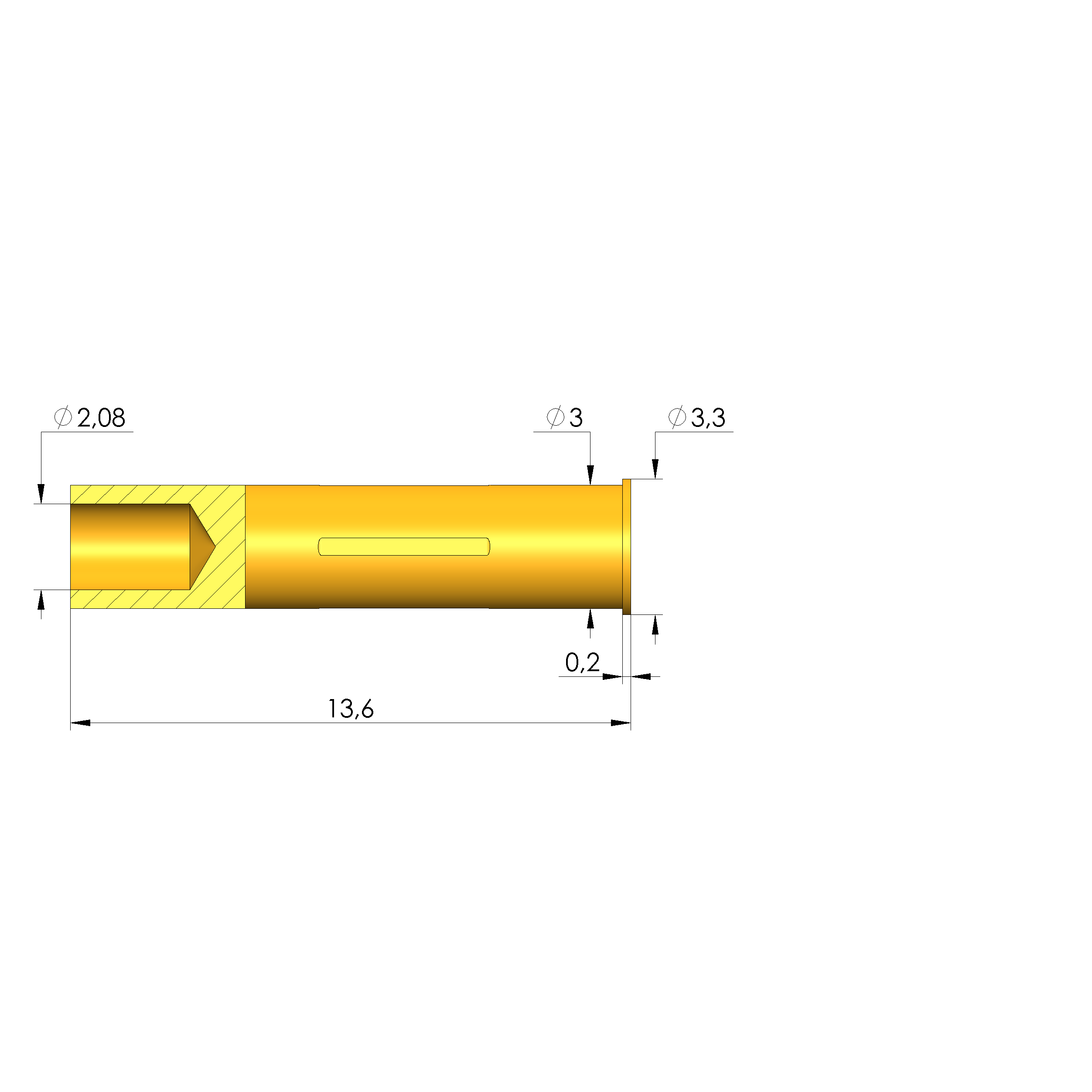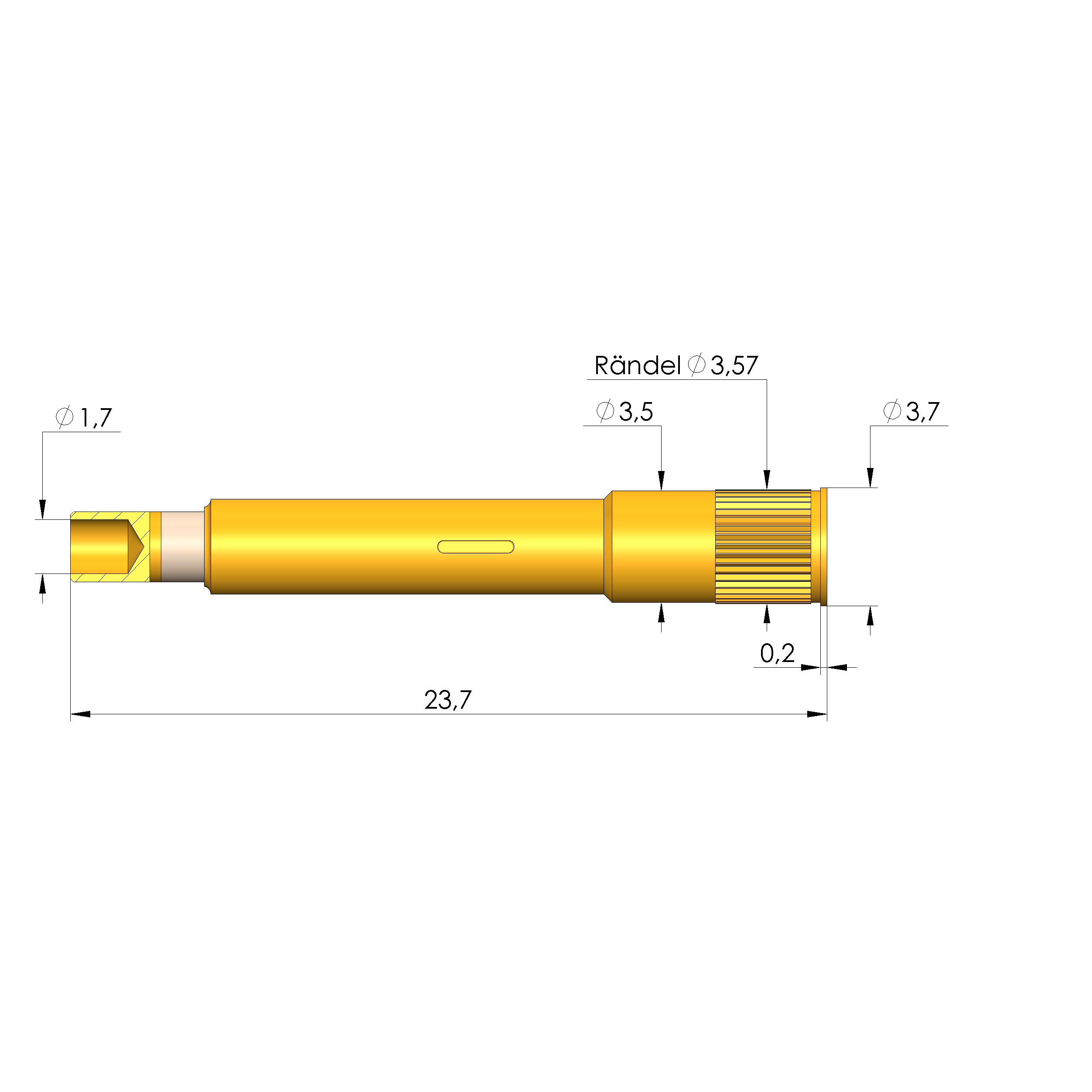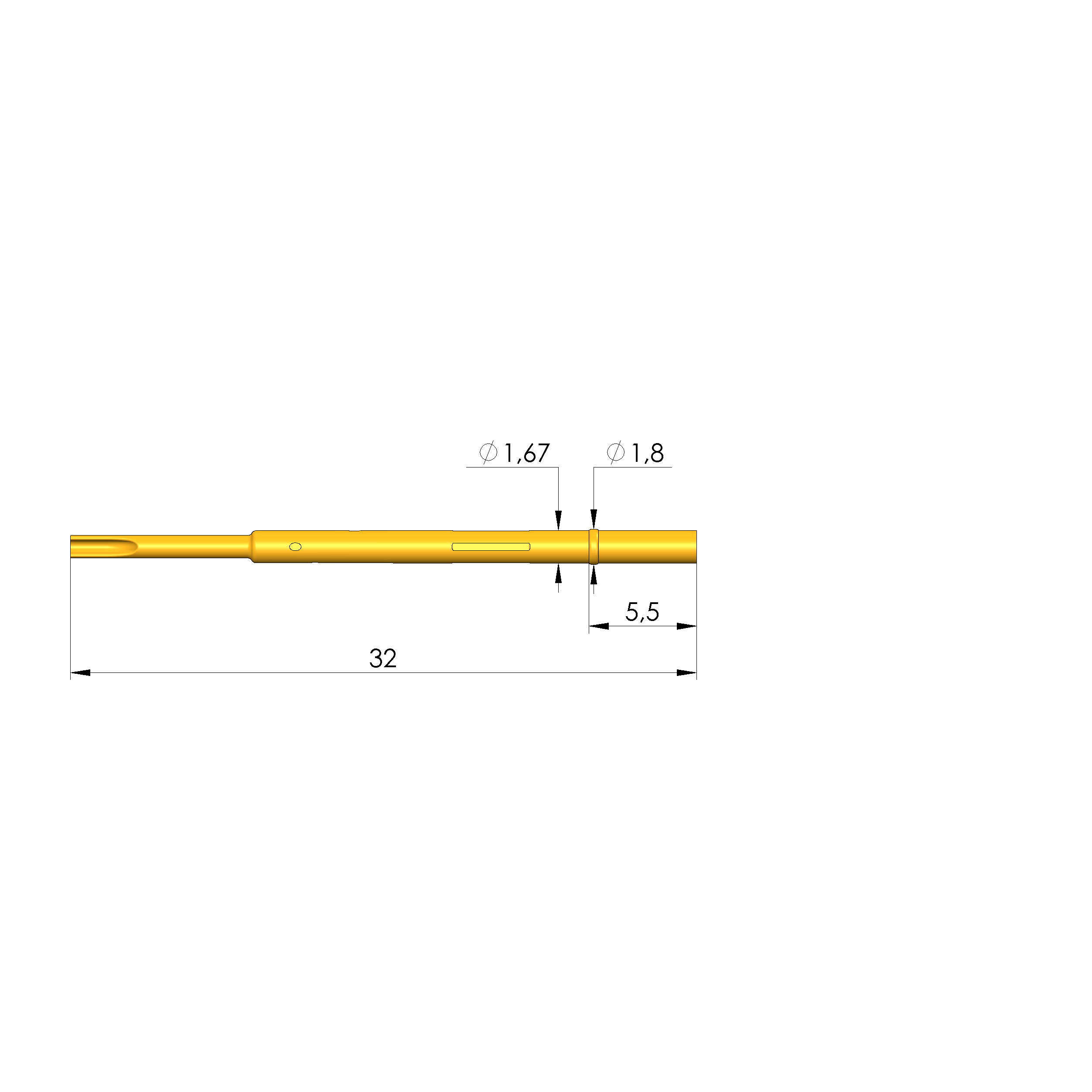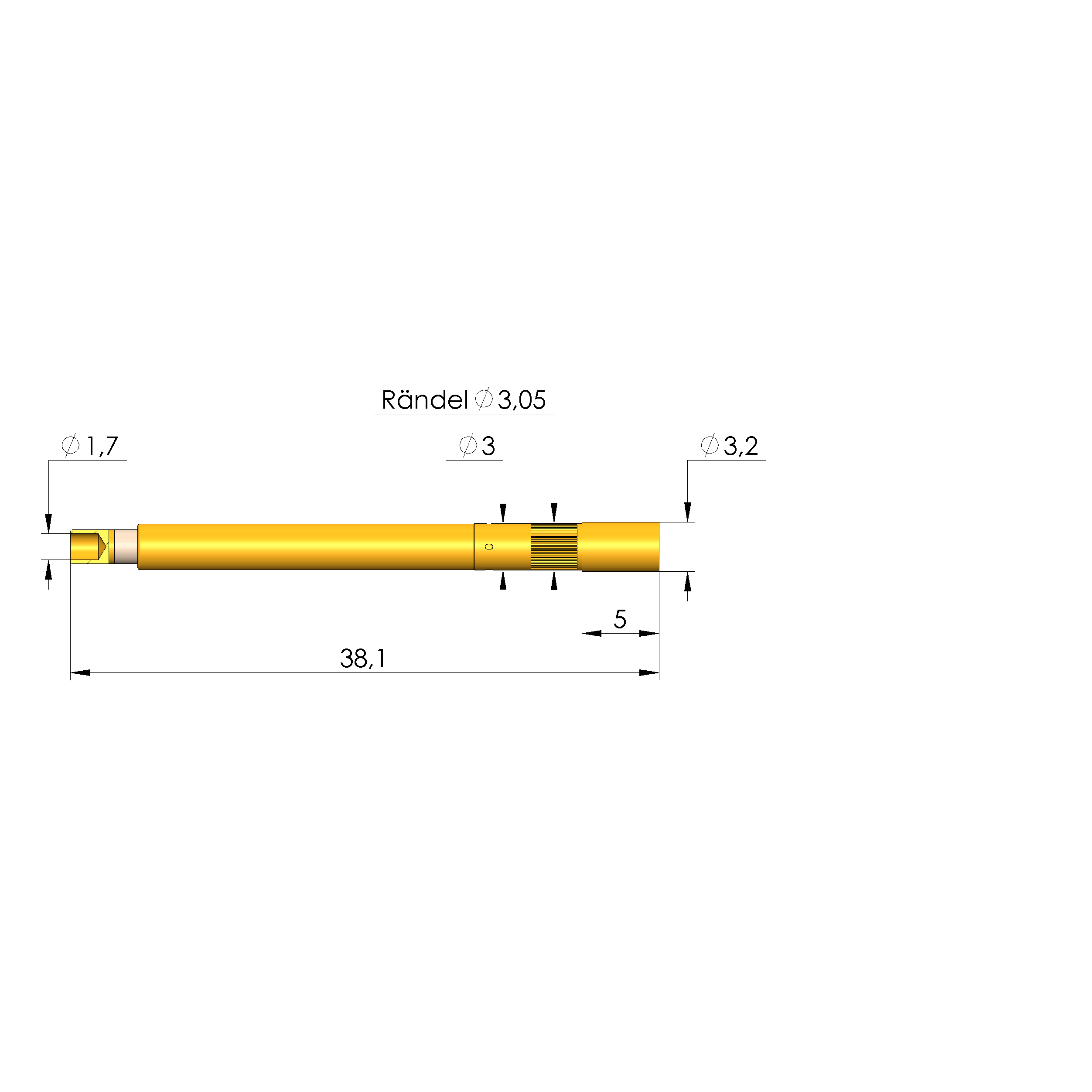Besides the classic range of test probes for the testing of PC boards and components, other test probes are available as test accessories.
In addition, INGUN offers a wide range of tools and components for the reliable, efficient handling of test probes of all kinds.
- Interface test probes and contact terminals - signal transfer points layout
- Stroke measuring probes - checking the working stroke of a probe or PCB
- PCB support pins - probes for secure support of the PCB in the test fixture
- Working stroke

Interface blocks
Interface probes (GKS) and contact terminals are used in interface blocks to reliably transfer signals in internal, external, and customised interfaces. In order to realise optimum transfer fields, several different probes and contact terminals with various tip styles, installation heights, and connection options are available.

Stroke measurement probes
Stroke measurement probes (HMS) are used to define the working stroke of a test probe when contacting a DUT. This can be necessary when selecting the optimal test probe (GKS), or solving contact issues which may arise. In order to determine the stroke, the stroke measurement probes (HMS) are inserted in a receptacle mounted in the test fixture. When the fixture is closed (with the DUT in place) the stroke measurement probe (HMS) is activated and remains in the end position. The length of the performed stroke can be determined by measuring the difference between the home position and the end position. The HMS plunger can be returned to the home position manually after the measurement is complete.

PCB support pins
PCB support pins provide a spring-loaded base when inserting the PCB in the test fixture or inline test device, especially in test set-ups without a PCB support plate.
Insertion tools
INGUN tools make an important contribution to secure, precise testing. Only with optimally installed receptacles (KS) and test probes, can reliable testing be guaranteed.
Depending on the receptacle (KS) and test probe (GKS) to be installed, various tools and bits are available. Receptacles are pressed into the probe plate, either up to the collar stop or by pressing the press-ring to allow for variable adjustment of the installation height.
Depending on their design, spring-loaded test probes are pressed into or screwed into the receptacle using a suitable tool. For these, INGUN offer optimally matched bit inserts, according to tip style and diameter of the probe.
